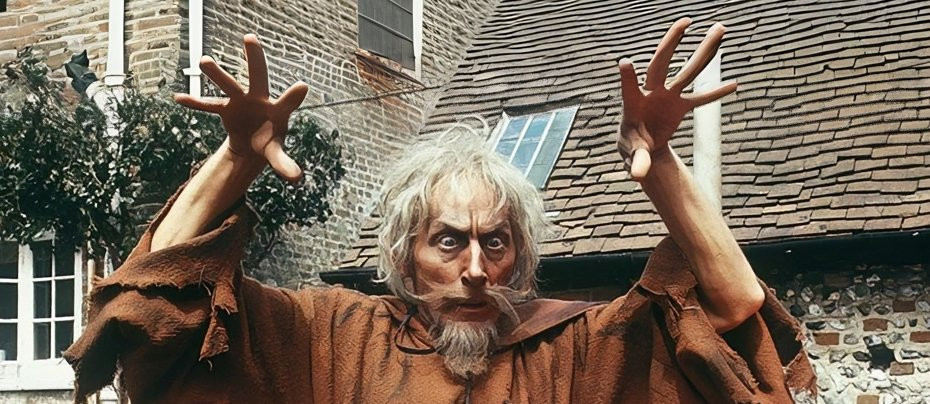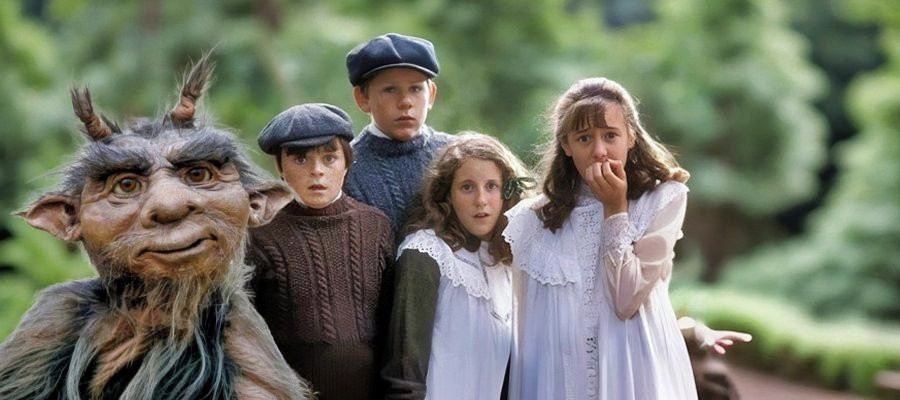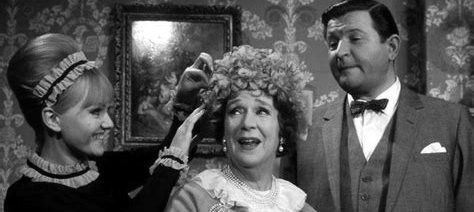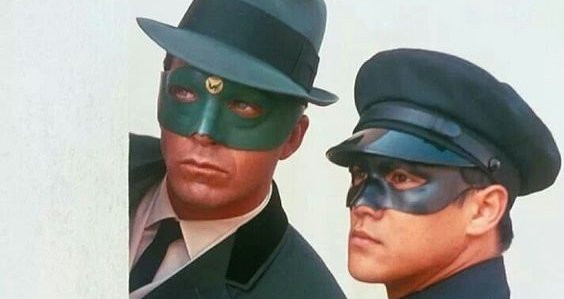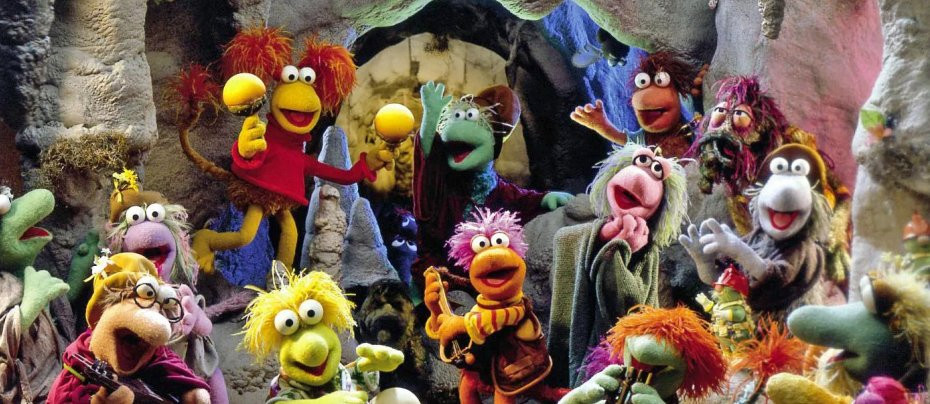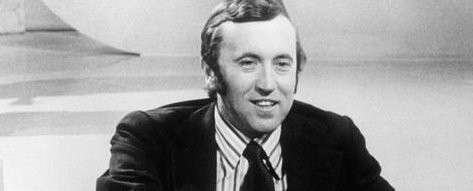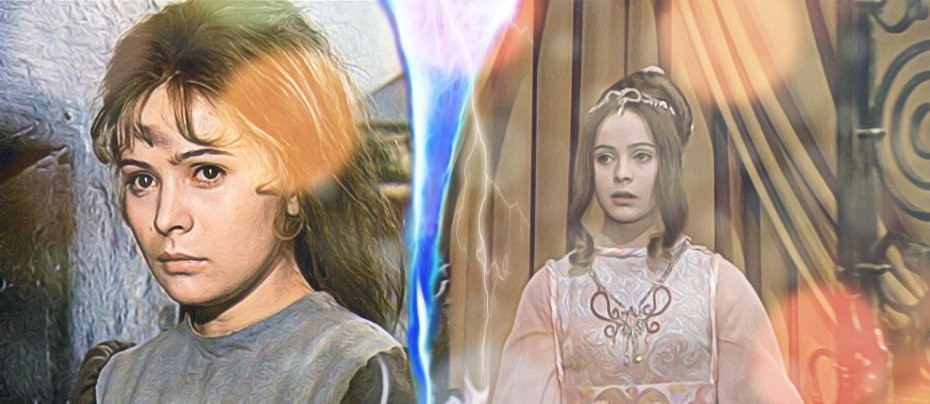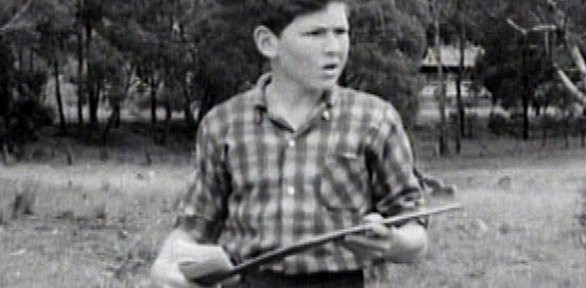
The Tinderbox
1966 - East GermanyOne of Hans Christian Andersen's first fairy tales, The Tinderbox was published in Copenhagen in May 1835 as the first instalment of the first collection of the then 30-year-old Andersen's 'Fairy Tales Told for Children.' It was not well received. This is hardly surprising considering that the story is frankly an amoral tale about a soldier who begins his journey by chopping off the head of an old lady. One literary journal went as far as advising Andersen not to waste his time writing fairytales.
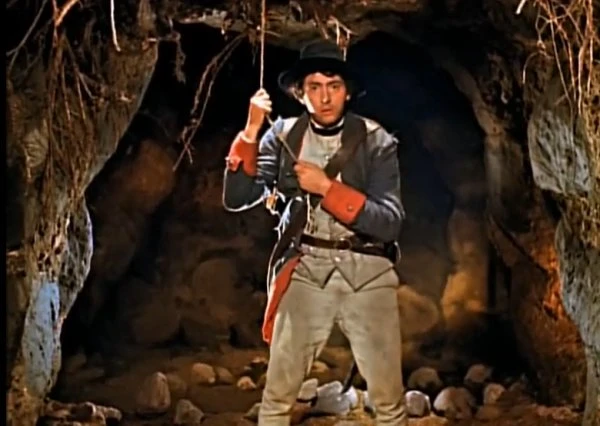
A penniless soldier, returning from war, meets a witch who asks him to climb down into a hollow tree filled with chambers and retrieve a magic tinderbox. In return, she gives the soldier permission to take anything else he finds inside the tree as long as he returns the tinderbox, which she claims was left there by her grandmother. Once inside he finds three chambers filled with precious coins guarded by three monstrous dogs, guarding copper, silver and gold, but he is able to subdue them with a blue checked apron that the witch had given him. He fills his pockets with all the coins he can carry and finds the tinderbox. Before returning the tinderbox to the witch, the soldier demands to know what she intends to do with it. When she refuses to tell him, he cuts off her head and keeps it for himself.

In the next town, the soldier buys himself the finest clothes, rents rooms in the finest inns and eats the finest food, using his money to 'buy' himself many friends. But eventually, the money runs out, he has to move into an attic and his so-called friends abandon him. The soldier opens the tinderbox to use the last candle that is inside it. As he does so, one of the dogs appears and offers to grant him a wish. He soon discovers that by striking the box once, the first dog from the chamber appears; striking it twice makes the second dog appear and three times brings forth the third dog. Each dog grants him whatever he wishes.
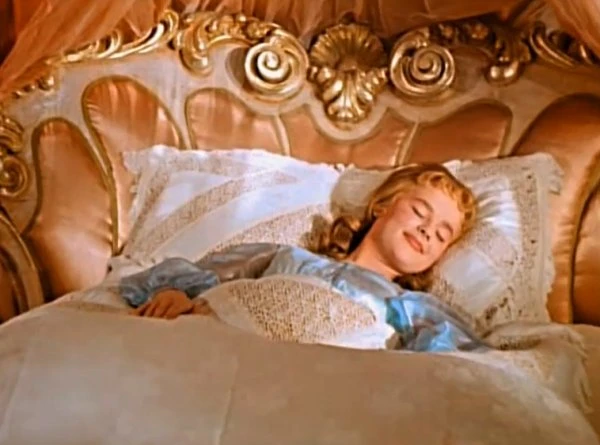
When the soldier hears of a beautiful princess who is kept locked away in a castle by her father, the king, because of a prophecy that his daughter would marry a common soldier, he makes a wish to see her. The dog disappears and returns with the princess on his back. The soldier is so taken by her beauty that he kisses her before the dog returns her to the castle. Now infatuated by the princess, the soldier asks to see her again. But later, he is arrested by the king's men and thrown into jail to await execution.
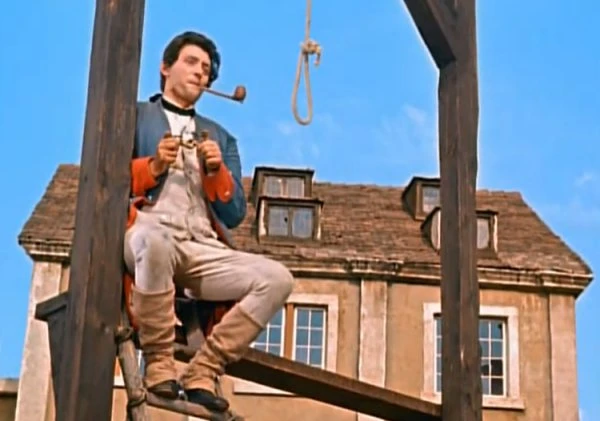
On the day he is to be hanged, the soldier requests one last wish - to be granted a final smoke before he dies. When the request is granted, he strikes the tinderbox three times and all three dogs appear. They attack the judge, the king and his queen, throwing them into the air until they are dashed to pieces. The princess is liberated from the council and marries the soldier where they reign at the head of the throne for ever after.
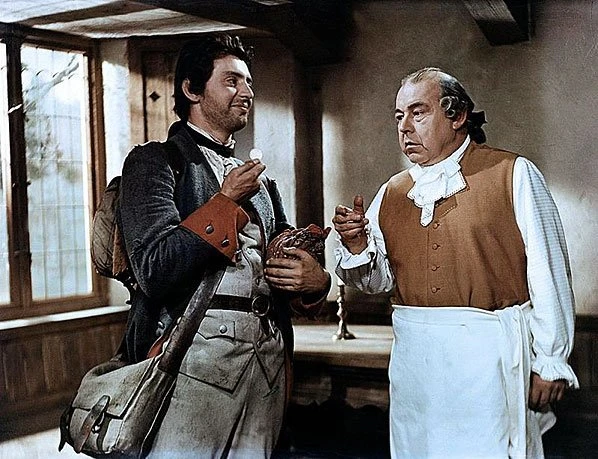
The Tinderbox has often been described as Andersen's version of “Aladdin and the Magic Lamp,” but it actually draws together a number of common fairy-tale tropes such as the magic helper with the ability to grant wishes, which is straight out of Aladdin, the rags-to-riches motif is from Snow White, and a beautiful princess trapped in a castle is from Rapunzel (both published in 1812). Andersen also based his story heavily on the Scandinavian folk tale of "The Spirit in the Candle", which may also have been the basis of “Tællelyset” (“The Tallow Candle”), that Andersen wrote when he was still at school and which was only discovered in 2012. The story, written in the 1820s, is about a candle that did not feel appreciated.
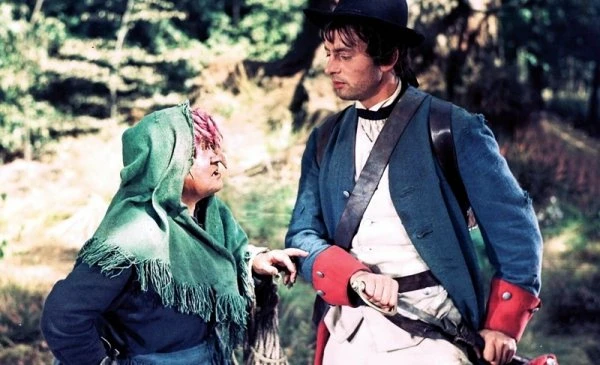
The film, made in East Germany in 1959 (titled Das Feuerzeug and directed by Siegfried Hartmann), follows the original story relatively closely but it makes both the beginning and end a little more palatable (this having been made for children). When the soldier returns from the underground chambers the witch turns into a giant snake and the soldier is forced to kill her before she kills him. And finally, the king and queen simply flee at the end of the story, having been scared away by the dogs instead of being savaged. It was directed by Siegfried Hartmann, one of the first directors to come out of the Deutsche Film-Aktiengesellschaft's (the state-owned film studio of the German Democratic Republic) Nachwuchsstudio programme which was established to teach young directors their craft.
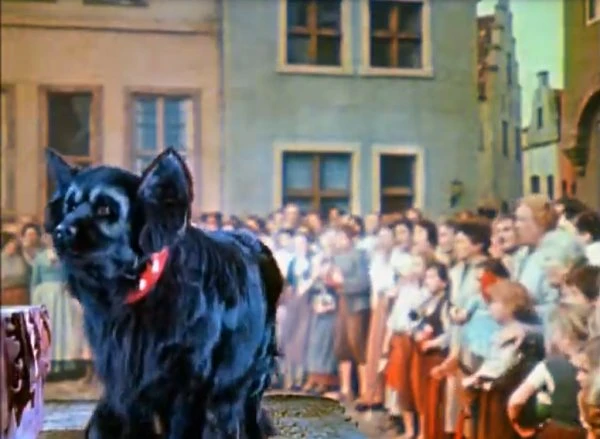
Playing der soldat (the soldier) was Rolf Ludwig, a Stockholm born actor known in Sweden as Rolf Erik Ludewig. He made his on-screen debut in 1952 and made his final appearance in a 1997 TV movie. Barbara Mehlan played die prinzessin (the princess). Special effects, which were quite good for that period, Ernst Kunstmann and his daughter, Vera. Kunstmann had previously worked on Fritz Lang's 1927 masterpiece, Metropolis. He also worked on another fairytale classic for television, The Singing Ringing Tree. The film ran at about 78 minutes but in 1966 the BBC showed it in the children's slot (5.25pm) under the banner of Tales From Europe in three parts over a three week period beginning on Thursday 28 April and ending on 12 May.
The film can be viewed on YouTube, dubbed into English and in all its colourful glory. Something that the British television audience were unable to admire in 1966.
Seen this show? How do you rate it?
Seen this show? How do you rate it?
Published on September 2nd, 2022. Written by Marc Saul for Television Heaven.


